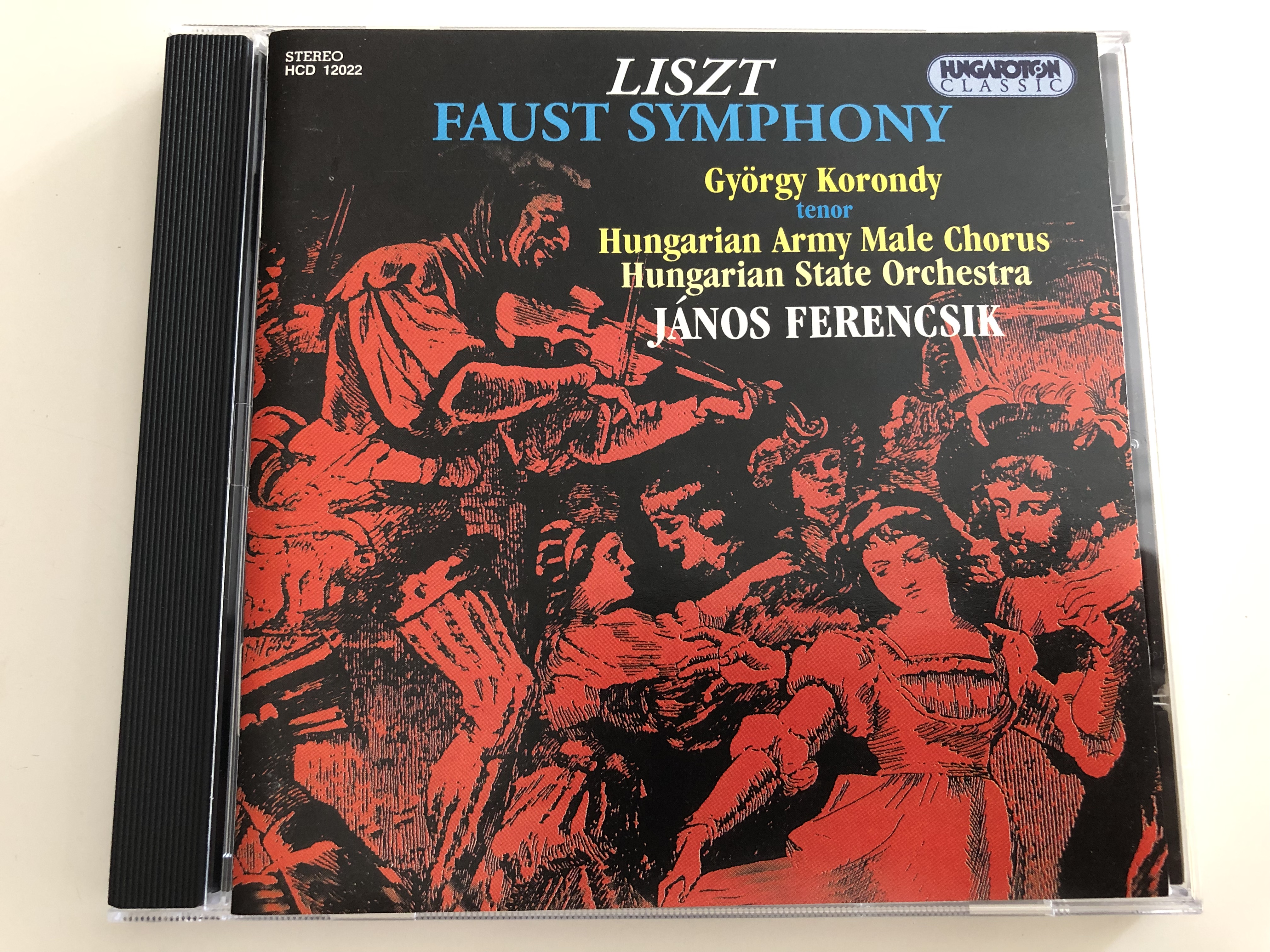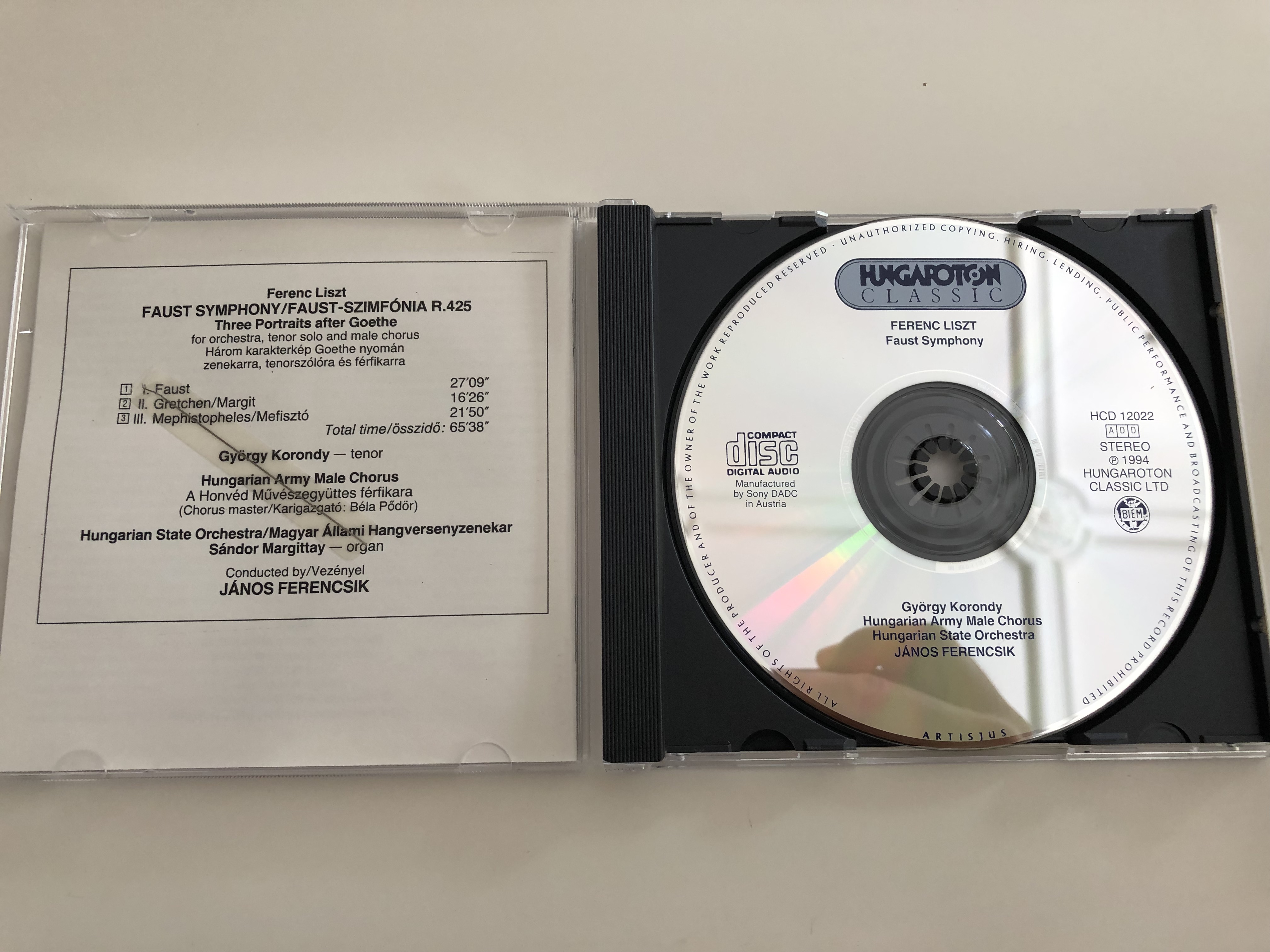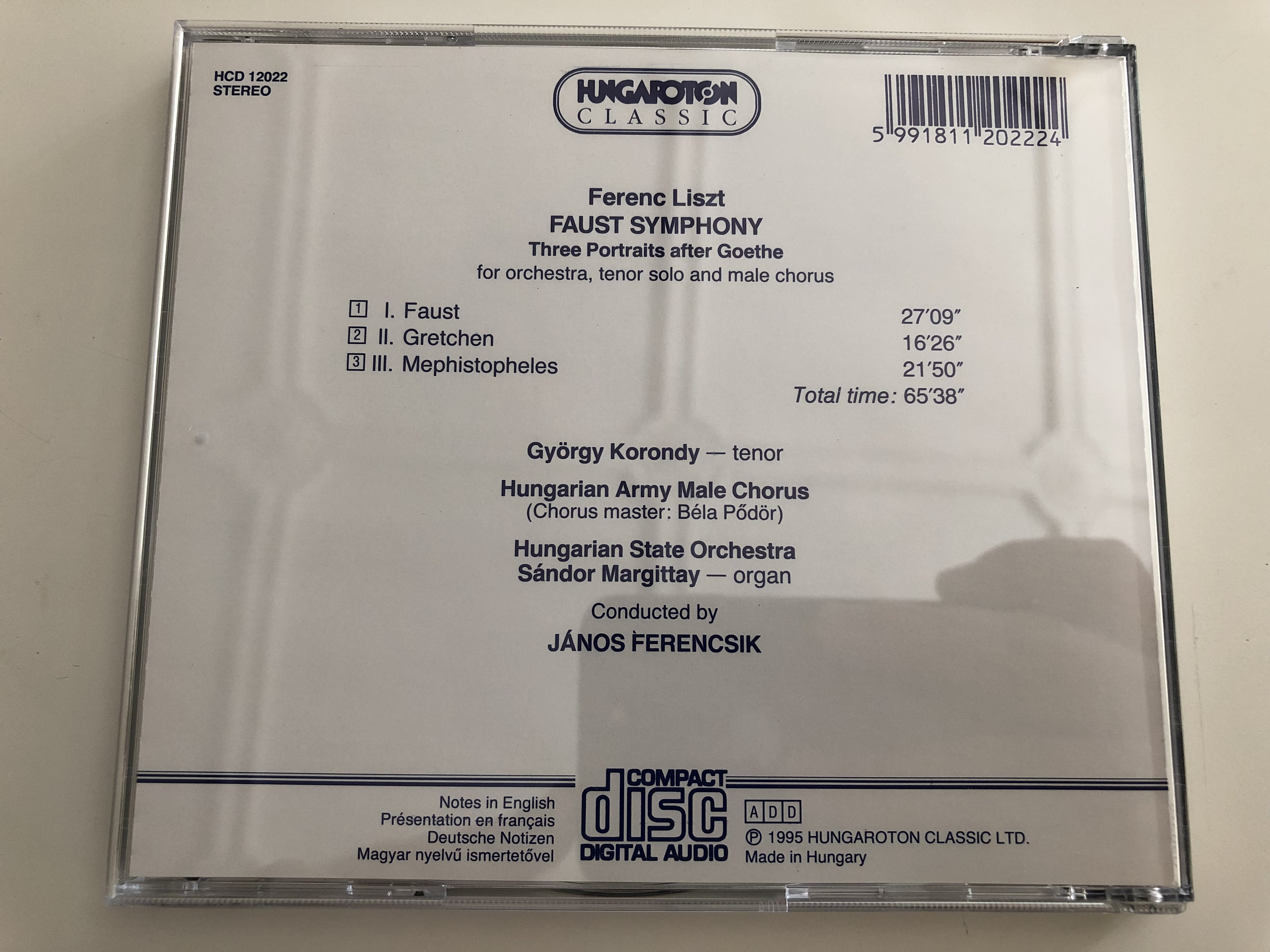Description
Ferenc Liszt - Faust Symphony / Three portraits after Goethe / for orchestra, tenor solo and male chorus / György Korondy tenor / Hungarian Army Male Chorus / Hungarian State Orchestra, Sándor Margittay organ / Conducted by János Ferencsik / Hungaroton Classic Audio CD 1995
Eine Faust-Symphonie in Drei Charakterbildern (S.108) / Faust-szimfónia három képben (S.108)
Nach Goethe / Goethe nyomán
HCD12022
UPC 5991811202224
MADE IN HUNGARY
TOTAL TIME: 65:38
Composed: 1853 - 1854, revised: 1857 (Closing Chorus)
Text of Movement III based on ´Corus mysticus´ from ´Faust´ by Goethe
Tracklist:
1. Faust
2. Gretchen / Margit
3. Mephistopheles / Mefisztó
| Faust-Symphony R. 425 | ||
| 1 | I. Faust | |
| 2 | II. Margit = Gretchen | |
| 3 | III. Mefiszto = Mephostopheles |
- Chorus – Hungarian Army Male Chorus
- Chorus Master – Béla Pődör
- Conductor – János Ferencsik
- Design – Miklós Szűts
- Engineer – Judit Lukács
- Orchestra – Hungarian State Orchestra
- Organ – Sándor Margittay
- Painting – Eugène Delacroix
- Producer – János Mátyás
- Tenor Vocals – György Korondy
A Faust Symphony in three character pictures (German: Eine Faust-Symphonie in drei Charakterbildern), S.108, or simply the "Faust Symphony", was written by Hungarian composer Franz Liszt and was inspired by Johann Wolfgang von Goethe's drama, Faust. The symphony was premiered in Weimar on September 5, 1857, for the inauguration of the Goethe–Schiller Monument there.
Liszt transcribed the complete score for two pianos, and the middle movement alone ("Gretchen") for solo piano. The transcription of 'Gretchen' was recorded by Leslie Howard as part of his set of complete recordings of Liszt's solo piano music.
T. solo (Movement III. only) - male choir (T-B) (Movement III. only) - 3 fl. (III anche picc.), 2 ob., 2 cl., 2 fg. - 4 cor., 3 tr., 2 trb., trb.b., tuba - arpa, org. - 4 timp., perc. (trg., ptti.) - strings: vl. 1, vl. 2, vla., vlc., cb.







































